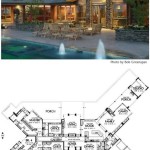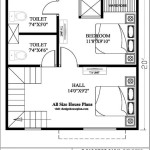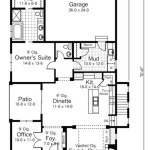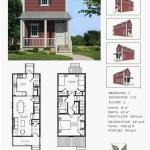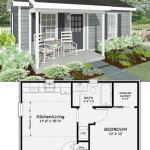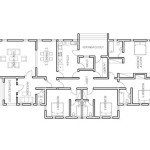House Plans for a 2,000 Square Foot Single-Story Extension: Cost Considerations
Adding a 2,000 square foot single-story extension to your home can significantly enhance your living space, offering new possibilities for bedrooms, living areas, or even a dedicated home office. However, understanding the associated costs is crucial before embarking on such a significant project. This article delves into the factors influencing the cost of a 2,000 square foot single-story extension, providing insights to help you budget effectively.
Factors Influencing Extension Costs
The cost of a 2,000 square foot single-story extension is influenced by a multitude of factors, including the location, building regulations, the chosen materials, and the complexity of the design. Here's a breakdown of the key cost drivers:
1. Location
The location of your property plays a significant role in determining the cost. Factors such as building regulations, local labor rates, and the availability of materials can vary considerably from region to region. Urban areas tend to have higher land and labor costs, while rural areas may offer more affordable options. It's essential to research the specific costs associated with your location before proceeding.
2. Building Regulations
Building regulations can affect the cost of your extension by dictating the required materials, construction standards, and permitting processes. These regulations can vary depending on your local municipality or county. Consulting with a qualified architect or builder in your area is crucial to ensure your extension complies with all necessary regulations and avoids potential delays and cost overruns.
3. Materials
The materials you choose for your extension will have a direct impact on the overall cost. From the foundation and framing to roofing, windows, and finishes, each element contributes to the project's budget. Higher-quality materials usually come with a higher price tag. Consider your long-term goals and aesthetic preferences when making material selections. For example, opting for energy-efficient windows and insulation may increase initial costs but lead to lower energy bills in the long run.
4. Design Complexity
The complexity of your extension's design will influence the labor involved and potentially the materials required. A straightforward rectangular addition will generally be less expensive than a complex design with multiple angles, curves, or special features. Consider the time required for planning, engineering, and construction when calculating the cost. Consulting with an experienced architect or designer can help you refine your design while ensuring feasibility and cost-effectiveness.
Cost Breakdown
The cost of a 2,000 square foot single-story extension can vary widely, but a typical breakdown may include the following components:
1. Design and Engineering
Hiring an architect or designer to create the plans and specifications for your extension is an important initial step. This cost can vary depending on the complexity of the design, the architect's experience, and the location. Expect to spend a percentage of the overall project cost on design and engineering fees.
2. Foundation
The foundation forms the base of your extension, and its cost can be influenced by the soil conditions, the size of the extension, and the chosen materials. Foundations can range from simple concrete slabs to more complex basement structures. Understanding the soil conditions and the weight load of your extension is vital for selecting the appropriate foundation type.
3. Framing and Roofing
The framing and roofing of your extension will involve significant labor costs. The materials used for framing, such as wood or steel, will also contribute to the cost. The design of the roof, including its pitch and complexity, will also factor into the expense. Consulting with a structural engineer is essential to ensure the framing and roofing system is strong and safe enough to withstand local weather conditions.
4. Windows and Doors
Choosing energy-efficient windows and doors can enhance the aesthetic appeal of your extension and improve its overall energy efficiency. However, these features can also add to the cost. Consider the size, style, and material of your windows and doors to determine their impact on your budget.
5. Finishes and Fixtures
The finishes and fixtures you select for your extension will greatly influence the overall aesthetic and cost. These elements include flooring, countertops, cabinets, lighting, plumbing, and electrical fixtures. Choosing higher-quality materials and fixtures can significantly increase the project cost. Consider your budget and design requirements to select finishes and fixtures that balance aesthetic appeal with affordability.
Managing Costs
To effectively manage the costs of your 2,000 square foot single-story extension, consider the following strategies:
1. Plan Thoroughly
Thorough planning is essential to control costs. Create a detailed budget, factoring in all potential expenses, including unexpected contingencies. Consulting with a qualified architect or builder can help you develop a comprehensive plan and identify potential cost-saving measures.
2. Shop Around
Obtain quotes from multiple contractors and suppliers to compare prices and find the best value for your money. Don't hesitate to negotiate for better pricing, especially if you have a well-defined scope of work and a clear understanding of your budget.
3. Consider DIY Options
If you have the skills and time, consider DIY options to reduce labor costs. Tasks such as painting, landscaping, and even some aspects of finishing work can be tackled independently to minimize overall expenses.
4. Prioritize Energy Efficiency
Investing in energy-efficient materials and appliances can lead to long-term savings on your energy bills. Explore options like insulation, energy-efficient windows and doors, and high-efficiency heating and cooling systems to minimize your energy consumption and reduce your carbon footprint.
This article has provided an overview of the cost considerations associated with a 2,000 square foot single-story extension. Remember that the specific cost will vary based on your individual needs and circumstances. By understanding the key factors influencing the cost and employing effective cost-management strategies, you can build a beautiful and functional extension within your budget.

House Extension Cost Guide 2024 How Much Is An

How Much Does A House Extension Cost Design For Me

House Extension Cost Guide 2024 How Much Is An

How Much Does An Extension Cost Selfbuild

House Extension Cost Guide 2024 How Much Is An

House Extension Cost Guide 2024 How Much Is An

House Extension Cost Guide 2024 How Much Is An

Single Story 4 Bedroom House Plans Truoba

How Much Does An Extension Cost Selfbuild

How Much Does An Extension Cost 2024
Related Posts

